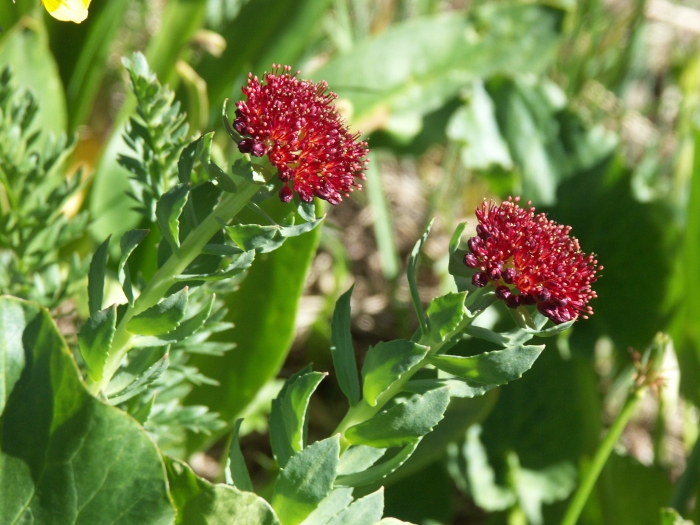Ledge Stonecrop
(Rhodiola integrifolia)
Ledge Stonecrop (Rhodiola integrifolia)
/
/

Robert Webster
CC BY-SA 4.0
Image By:
Robert Webster
Recorded By:
Copyright:
CC BY-SA 4.0
Copyright Notice:
Photo by: Robert Webster | License Type: CC BY-SA 4.0 | License URL: http://creativecommons.org/licenses/by-sa/4.0/ | Rights Holder: Robert Webster | Publisher: iNaturalist | Date Created: 2005-07-18T17:18:17-07:00 |























Estimated Native Range
Summary
Rhodiola integrifolia, commonly known as ledge stonecrop, western roseroot, or king’s crown, is a perennial herb that is native to alpine and subalpine habitats, including rocky cliffs, talus slopes, and meadows in northeastern Russia, Kamchatka, and western North America. It typically grows to a height of 12 inches (30 cm) and features succulent, lance-shaped leaves that can turn shades of orange, rose, or red as they mature. The plant is notable for its dense cymes of up to 50 bright red to deep purple flowers, which bloom in the summer and are quite showy, attracting pollinators such as bees and butterflies.
In cultivation, Rhodiola integrifolia is valued for its striking foliage coloration and its ability to thrive in rock gardens, alpine gardens, and as a ground cover in areas with cool summers. It prefers well-drained soils with medium moisture and can tolerate full sun to part shade conditions. While it is generally low-maintenance, it can be susceptible to root rot if overwatered or planted in poorly drained soils. The subspecies ssp. leedyi, which is federally listed as threatened in the U.S., is found only in Minnesota and upstate New York, highlighting the importance of conservation efforts for this plant.CC BY-SA 4.0
In cultivation, Rhodiola integrifolia is valued for its striking foliage coloration and its ability to thrive in rock gardens, alpine gardens, and as a ground cover in areas with cool summers. It prefers well-drained soils with medium moisture and can tolerate full sun to part shade conditions. While it is generally low-maintenance, it can be susceptible to root rot if overwatered or planted in poorly drained soils. The subspecies ssp. leedyi, which is federally listed as threatened in the U.S., is found only in Minnesota and upstate New York, highlighting the importance of conservation efforts for this plant.CC BY-SA 4.0
Plant Description
- Plant Type: Herb
- Height: 0.3-0.75 feet
- Width: 1-1 feet
- Growth Rate: Moderate
- Flower Color: Purple, Red, Yellow
- Flowering Season: Spring, Summer
- Leaf Retention: Evergreen
Growth Requirements
- Sun: Full Sun
- Water: Medium
- Drainage: Fast
Common Uses
Drought Tolerant, Low Maintenance, Rock Garden
Natural Habitat
Alpine and subalpine habitats, including rocky cliffs, talus slopes, and meadows
Other Names
Common Names: Ledge Stonecrop, Western Roseroot, Entire-Leaved Stonecrop, Alpine Sedum
Scientific Names: , Rhodiola integrifolia, Rhodiola rosea subsp. integrifolia,
GBIF Accepted Name: